The Streacom F12C Aluminum Desktop Case Review
by E. Fylladitakis on September 14, 2015 9:00 AM ESTThe Exterior of the Streacom F12C Desktop Aluminum Case
The Streacom F12C is clearly a minimalistic design. It highlights the simplicity of plain sandblasted aluminum, with the only aesthetic touches being the rounded corners and bottom edge of the faceplate. The F12C features a simple yet elegant appearance. Measuring 184 × 440 × 320 mm (7.25 × 17.35 × 12.6 in) and with a volume of 0.0259 m3 (25.9 liters), the F12C is one of the largest desktop cases that we have ever seen, yet it still requires about 50% less space than an average tower case. As the case is almost entirely made from aluminum, it is particularly lightweight, tipping our scale at just 4.35kg.
Only a rounded power on button can be seen to the left of the faceplate, with a pinhead LED light right above it. The black spot to the right of the faceplate is an opening for an infrared remote control device, which is optional. There is no opening for an optical media drive, slim or otherwise, which can be an issue for a case intended to hold HTPC systems. This issue aside, there is another series of omissions: there are no front USB or audio jacks, and not even a reset button. To clarify, there are no USB ports on the sides or top of the case either. For an HTPC case, the omission of front USB ports is a critical issue.
There are three rectangular openings at the top and two square openings at either side of the F12C chassis. All of these openings are air vents. The satin black frame surrounding them is a magnet that attaches on metal studs bolted onto the aluminum frame, locking the mesh filter into the cutout.
The mesh filters are very thin and soft, with a high aperture. It unlikely that they are capable of blocking much of the dust from entering the case, as some of the very small dust particles will easily go through the holes. On the other hand, they are very easily removable and washable, making them very practical.
The bottom of the case is simple, with some openings punched to serve as air vents. There are four aluminum circular feet with soft rubber pads attached. The chassis model is etched onto the chassis and there is a small sticker with the serial of the product as well.
The rear of the F12C chassis is very simple and plain design. It essentially looks like a typical tower case that has fallen on its side. An aluminum cover shields the expansion card slot screws. Strangely, there are no ventilation or fan openings, even though there is more than enough space of a small exhaust fan.


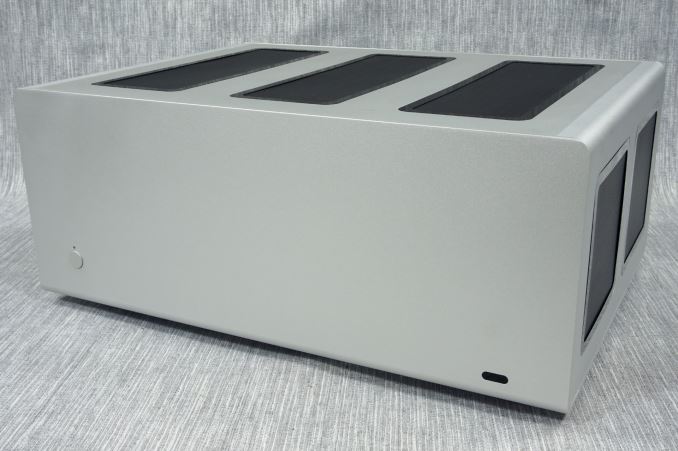
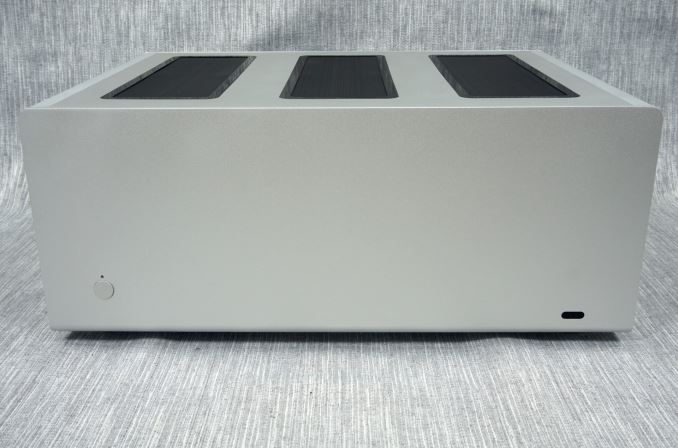
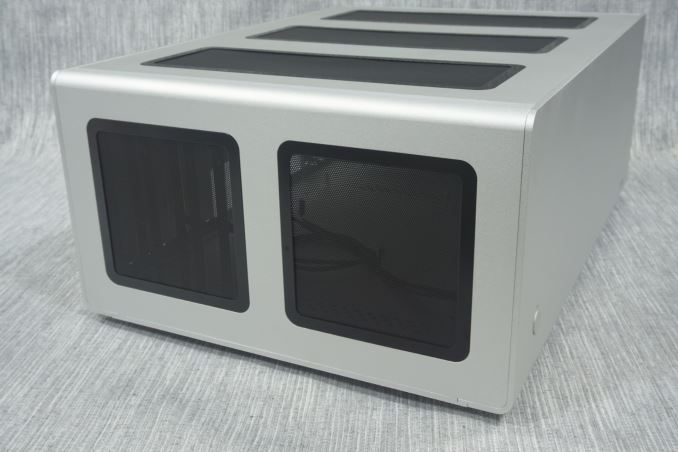
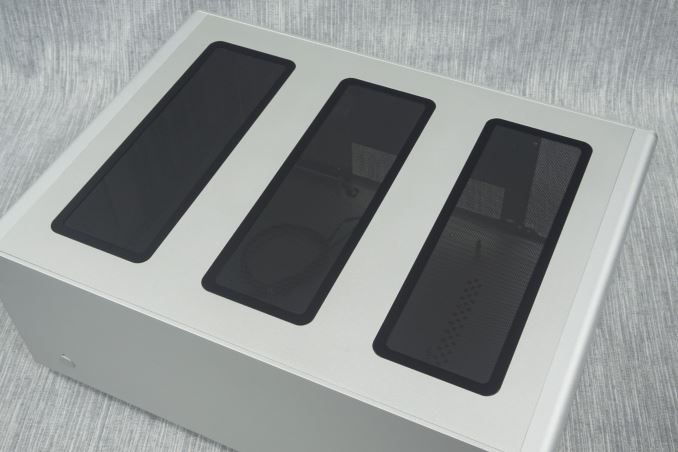
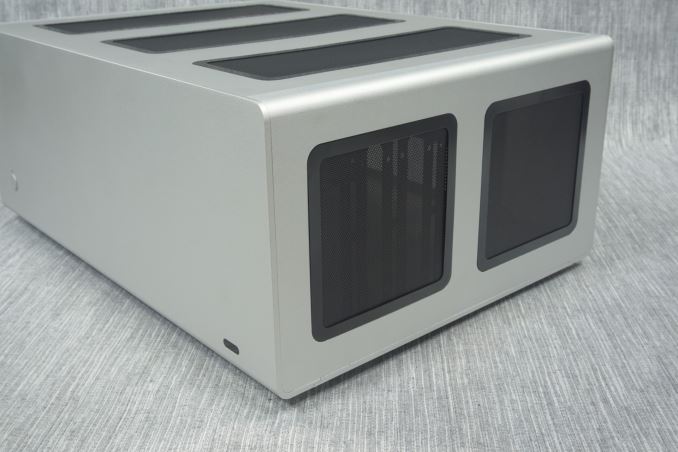
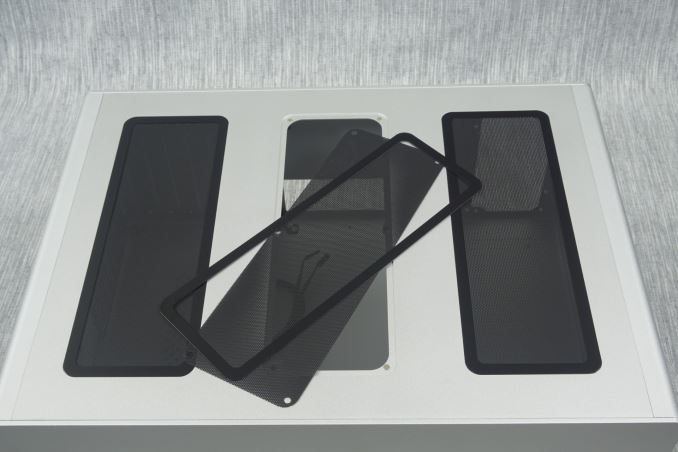
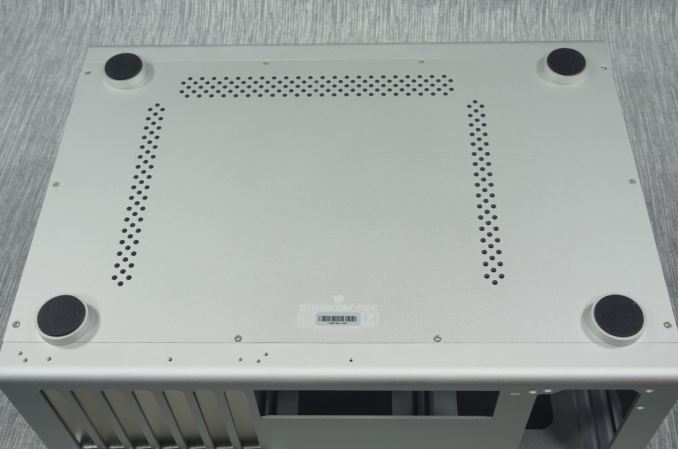
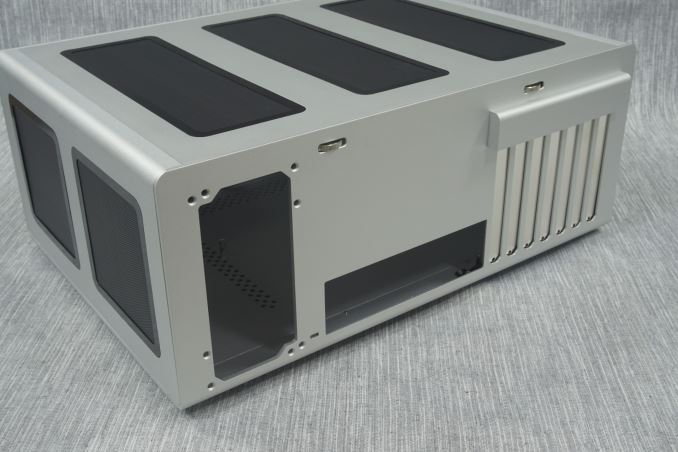








45 Comments
View All Comments
techxx - Monday, September 14, 2015 - link
Who in the world needs full-sized ATX nowadays? Case looks great, but too big.DanNeely - Monday, September 14, 2015 - link
Anyone doing 2-way SLI/XFire will benefit from being able to space the cards out without crowding the CPU socket by having the 1st GPU in the top PCIe slot.DanNeely - Monday, September 14, 2015 - link
That said, I'm not sure why you'd want to for an HTPC though; and this case seems to've added it as a feature check instead of as a practical option anyway.hpascoa - Monday, September 14, 2015 - link
Replace "HTPC" with "Steam Machine" and it starts making a whole lot more sense.DanNeely - Monday, September 14, 2015 - link
Not really. 4k is mostly pointless at TV viewing distances and a single GPU is more than plenty at 1080p.Bully242 - Friday, September 18, 2015 - link
So is 720p if you sit back far enough.. Don't see how your opinion makes 4k pointlessWwhat - Wednesday, September 23, 2015 - link
Soon a slew of VR headsets will ht the market.Although a card like the fuji nano should do OK in a single card setup even for the larger resolution that requires.
jardows2 - Monday, September 14, 2015 - link
The size of the case does not bother me, as there a mATX cases that are as large in overall volume. This gives options for many hard drives or fans. The real question is why anyone would need a full ATX motherboard, unless they are using 3-way SLI or crossfire.joex4444 - Monday, September 14, 2015 - link
I have a full ATX motherboard that's well populated. GPU taking up two slots, a WiFi PCIe card, a TV tuner PCIe card, a USB 3.0 PCIe card (LGA775 - onboard USB2.0 only), and a PCIe 8 port external SAS RAID card.jardows2 - Tuesday, September 15, 2015 - link
Forgot about the TV Tuner. For an HTPC, that is a big consideration.